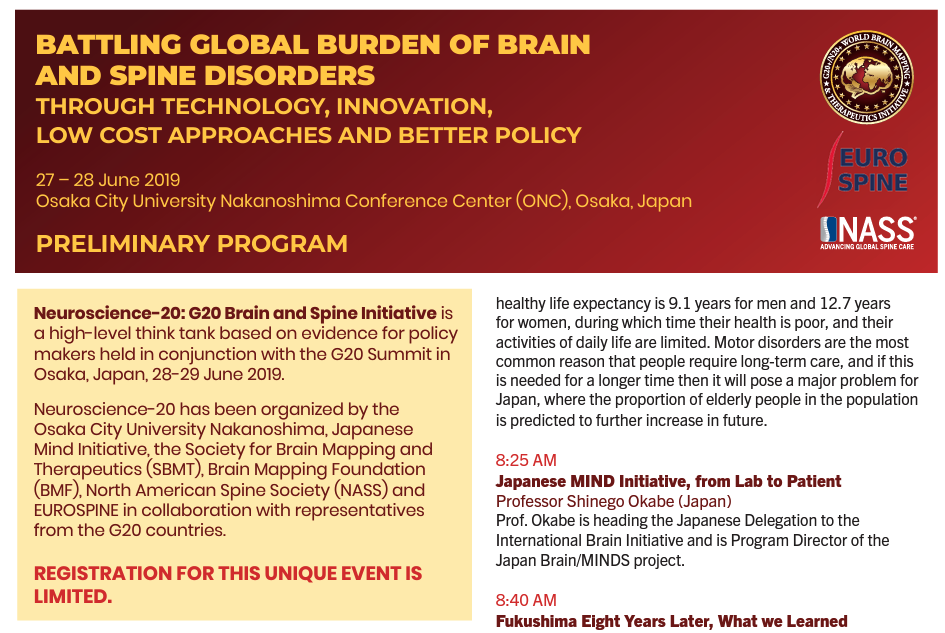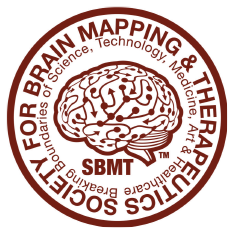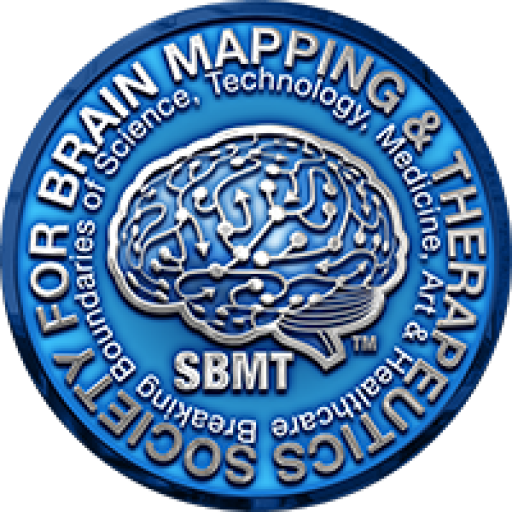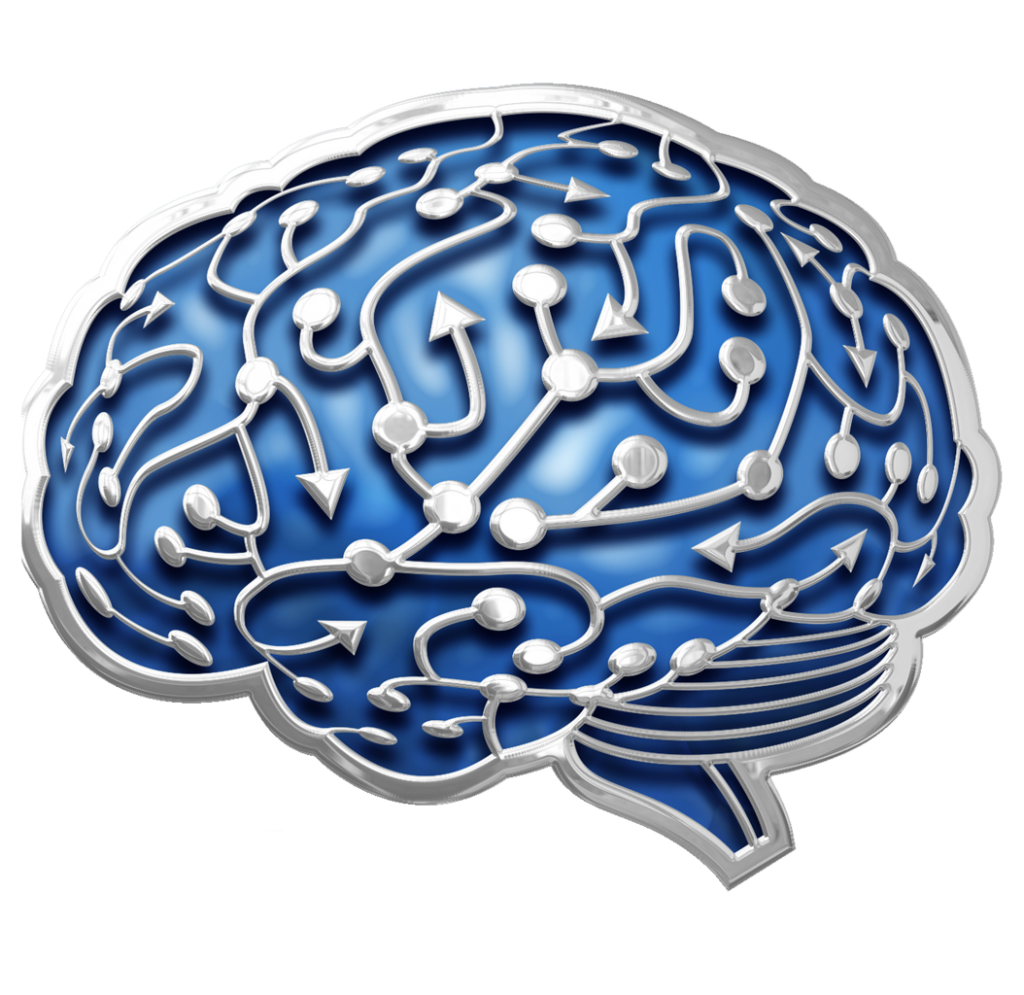
Neuroscience-20: G20 Brain and Spine Initiative is a high-level think tank based on evidence for policy makers held in conjunction with the G20 Summit in Osaka, Japan, 28-29 June 2019. Neuroscience-20 has been organized by the Osaka City University Nakanoshima, Japanese Mind Initiative, the Society for Brain Mapping and Therapeutics (SBMT), Brain Mapping Foundation (BMF), North American Spine Society (NASS) and EUROSPINE in collaboration with representatives from the G20 countries. REGISTRATION FOR THIS UNIQUE EVENT IS LIMITED. healthy life expectancy is 9.1 years for men and 12.7 years for women, during which time their health is poor, and their activities of daily life are limited. Motor disorders are the most common reason that people require long-term care, and if this is needed for a longer time then it will pose a major problem for Japan, where the proportion of elderly people in the population is predicted to further increase in future. 8:25 AM Japanese MIND Initiative, from Lab to Patient Professor Shinego Okabe (Japan) Prof. Okabe is heading the Japanese Delegation to the International Brain Initiative and is Program Director of the Japan Brain/MINDS project. 8:40 AM Fukushima Eight Years Later, What we Learned Professor Shinichi Kikuchi (Japan) Dr. Kikuchi is with Fukushima Medical University (Fukushima, Japan). The Fukushima disaster shook Japan and the world. What can we learn from it? What are the implications for policy? We get the unique opportunity to hear the perspective and experience of Dr Kikuchi, who led the medical response 8:55 AM Discussion Battling Disability Moderator: Margareta Nordin, Dr. Med. Sci., PT 9:05 AM Economic Development and the Burden of Disease David Lipton and Mitsuhiro Furuawa, International Monetary Fund (USA) The economic burden of brain, spine, and CNS diseases may be vastly underestimated, as are eff ects on productivity and other economic and human development factors. AGENDA Thursday 27 June 2019 7:00 AM Welcome Coff ee & Registration Master of Ceremony: Chris Ebell, VP of Neuroscience-20 and Member of the Board of SBMT 8:00 AM Welcome and Opening Address Professor Hiroaki Nakamura (Japan), Professor Shigeo Okabe (Japan), Professor Babak Kateb (USA) Insights from Japan Moderator: Babak Kateb, MD 8:15 AM Local Host Welcome Professor Hiroaki Nakamura (Japan) “Faith Will Move Mountains: Extending Healthy Life Expectancy.” The mean life expectancy in Japan is now 80.75 years for men and 86.99 years for women, longer than ever before. However, the divergence between this fi gure and 9:20 AM Unraveling Disability Related to Spine Disorders and Mental Health Pierre Côté (Canada) Spinal disorders and mental health disorders are the two leading causes of disability worldwide. Despite large societal investments in the treatment of musculoskeletal pain and mental health disorders, the prevalence of resulting disabilities, continues to grow significantly. One reason for this epidemic is that musculoskeletal pain and mental health disorders often coexist in individuals, yet research has not considered their shared etiology and prognosis. Dr. Côté will explore the epidemiology of disability related to these conditions and propose a novel approach to conceptualizing disability related to spine and mental health disorders and discuss the development of prevention and rehabilitation interventions for disability. 9:35 AM Implementation of the Disability Action Plan Worldwide 2014 – 2021 Tarun Dua (Switzerland) WHO’s data and evidence-driven approach to global health policy provides an authoritative view on the prevention, costs, and effects of CNS disease. For the G20, their focus is on dementia on which WHO just published a new report. 9:50 AM Spine Care, Prevention and Treatment Options: Why We Should Pay Attention to the Human and Financial Costs Hani Mhadli (Spain) Policy recommendations for the globe must be inclusive and consider the experience of all geographies. Dr Mhadli shares the South-American perspective as the President-elect of the Association of Iberian and Latin American Spine Societies (SILACO) and the Head of Spine Service at the University Hospital las Palmas de Gran Canaria, Spain. 10:00 AM Discussion 10:10 AM Coffee Break Innovation Moderator: Daniel Sipple, DO, FABPMR, DABPM 10:30 AM New Frontiers in Cellular Therapeutics-based Diagnostics and Therapeutics for Alzheimer’s Disease Kuldip Sidhu (Australia) and Robert Hariri (USA) Dementia that encompasses Alzheimer’s and Parkinson’s diseases is a global issue and currently there are more than 46.8 million worldwide and over 342, 800 Australians suffering with this disease. With no cure so far, the projection is that this number will be double by 2030 and more than triple by 2050. Dementia is the third major cause of death after heart disease and stroke. There is a huge economic impact, currently Australia is spending more than 4.9 billion and 1 trillion dollars worldwide to maintain these patients. There is a latency of 10-15 years before symptoms of Alzheimer’s appear. With the advent of induced pluripotent technology stem cells technology, we can reproduce the disease in the Patri dish and hence can thus turn the clock back on these disease from number of years to few weeks. This new frontier is paving the way to diagnose and effectively tackle this disease, reducing burden and improving lives. 10:40 AM The Future of Spine Care from Technology to Global Spine Policy Jeffrey Wang (USA) As every aspect of care evolves it is crucial for policymakers to scan the horizon and see how clinical intervention and prevention will look like in the next decade. As one of the foremost spine doctors in America, Dr Wang will bring his insight and experience as a practitioner to the roundtables for brain and spine disorders as well as introducing a resolution on how the G20 nations should synchronize clinical protocols and data sharing on newly developed technologies and innovation. 10:50 AM Pain, Motor Control and the Effect of Therapeutic Exercise Paul Hodges (Australia) Contemporary therapeutic exercise for musculoskeletal conditions relies on findings from neuroscience (including neuroscience of pain and movement), biomechanics, muscle physiology and immune system function. The interaction between these diverse fields is helping explain the observations of people in pain and is leading to improved outcomes. The challenge is to harness the opportunity the reduced massive burden of musculoskeletal pain. Dr. Hodges is a recognized as a distinguished expert in the field and known for his innovative research approach from cells to systems to clinical application. 11:05 AM Telethon France: A World Class Model for Sustainable Public-Government and Nonprofit Partnership Jean Pierre Gaspard (France) An impressive example of a non-profit building a research and innovation ecosystem around their mission, neuromuscular diseases. The organization raises over 120 million Euros per event and invests this in awareness in research and development. http://www.afm-telethon.com/news/afm-telethonhonored-as-pioneer-in-technology-development.html 11:20 AM Discussion Innovation & Neurotechnology Development in Action Moderator: Babak Kateb, MD 11.30 AM Advances in Diagnostics and Therapeutics to Battle Brain Disease Babak Kateb (USA) Dr. Kateb’s research has been focused on introduction of advance diagnostics and therapeutics into clinical neuroscience in order to rapidly identify and introduce game changing technologies to treat neurological disorders such as brain cancer, Alzheimer’s disease, Parkinson’s disease, and other brain and spinal disorders. Case studies of technology development such as Diffusion Tensor Imaging (DTI) and Magnetoencephalography (MEG), cellular therapeutics and combination of device, cellular therapeutics and nanodrug developments. Recommendations on making MEG and EEG as standard diagnostic for the study of neurological and mental disorders. Also the opioid addiction crisis is putting tremendous amount of pressure on the healthcare systems globally. This crisis could only be managed by proper data collection sharing and dissemination as well as introduction of new drug/ device development and better management of the lifestyle including exercise. Recommendations on fast tracking cellular therapeutics. At the Cellular Level 11:35 AM State of Science in Oncology: Cell-to-Cell Signaling in Neurodevelopment Vicky Yamamoto (USA) Cell signaling plays a critical role in normal development and maintenance of tissue homeostasis. Aberrant cell-tocell signaling can contribute to abnormal development, diseases, and cancer. One of the biggest challenges in cancer treatment is treatment resistance and there is a great need for drugs that can enhance radiation therapy or chemotherapy responsiveness in cancer. 11:45 AM Cellular Therapeutics for Treatment of Spinal Cord Injury, Stroke and ALS Brian Mehling (USA) Dr. Mehling and Blue Horizon International has treated and evaluated the effect of cellular therapeutics and its efficacy in over 2600 procedures equivalent to 600 patients in the United States. 11:55 AM Transformative Alogeneic Cellular Therapies in Cancer Immunotherapy and Functional Regeneration Robert J. Hariri (USA) Placenta-derived allogeneic cell therapy products aim to augment immunity by harnessing a patient’s own immune system to combat disease. Other therapies and augment longevity by targeting organ and tissue repair and functional regeneration. The aim is to augment human immunity and longevity, and to improve the human health span. 12:05 PM Discussion 12:15–1:30 PM Lunch Break Advances in Imaging Technology 1:30 PM MEG Technology Application in Medicine Today Craig Shapiro (USA) Magnetoencephalography (MEG) is a functional neuroimaging technique for mapping brain activity by recording magnetic fields produced by electrical currents occurring naturally in the brain, using very sensitive magnetometers. Applications of MEG include basic research into perceptual and cognitive brain processes, localizing regions affected by pathology before surgical removal, determining the function of various parts of the brain, and neurofeedback. This can be applied in a clinical setting to find locations of abnormalities as well as in an experimental setting to simply measure brain activity. 1:40 PM Analytical Framework for Analysis of DTI Data for Specific Symptoms of Closed Head Injury & Spinal Cord Injury: FA & Tractographic Findings in Memory Dysfunction, Photophobia, Central Vertigo, Parkinsonian Symptoms, & Spinal Cord Injury Aaron Filler (USA) DTI, sometimes called DT-MRI, is short for Diffusion Tensor Magnetic Resonance Imaging. This innovative diagnostic technique is a variation on the standard MRI that is used to create images of internal organs through magnetic images. This MRI-based neuroimaging technique makes it possible to estimate the location, orientation, and anisotropy of white matter tracts in the brain and spinal cord. It can diagnose hidden brain injuries and improve the delineation of spinal cord injury. 1:50 PM Discussion Exercise for Brain and Spine Health Moderator: Paul Hodges PhD, PT 2:00 PM The Impact of Exercise and Movement Therapy on Wellness and Health Chung Sien (Singapore) Prescribing Physical Activity (PA) in the right “dosage” is a highly effective prescription for the prevention, treatment and management of more than 40 of the most common chronic health conditions encountered in clinical practice. Exercise Is Medicine®, a program of the American College of Sports Medicine, encourages health care providers, particularly those in primary care, to assess and record PA as a vital sign during patient visits and to conclude each visit with an exercise “prescription” and/or referral to a certified health fitness professional or allied health professional for further counseling and support.2:10 PM Regular Exercise is Food for the Brain: Recommendations and Acceptability in Different Communities Margareta Nordin (France) The efficacy of exercise for the wellbeing and health is well documented. Exercise and the importance of motion therapy is equally effective in brain and spine diseases as a matter of fact in all diseases and all age groups. The acceptability and adherence to keeping active and to exercises varies with cultural influence, age, education, governmental policies through public health and care given. A much larger effort globally by national governments must be supported to maintain health and ability to function through promotion of low-cost effort exercise program to school, community, work and health care institutions. 2.20 PM Discussion Medical and Pharmacological Treatment Today Moderator: Eric Muehlbauer MJ, CAE 2.45 PM Pain Management: Sustained Release Local Anesthetics and Social Infrastructure Daniel Sipple (USA) Dr. Sipple examines factors that contribute to opioid addiction and provides a new paradigm for looking at the problem. Anestagel as an example of repurposing technology – custom cross-linked hyaluronic acid with homogeneous 3-D structure for precision elution, Non Newtonian fluid mechanics, with 22 Cleveland Clinic patents, latent breakthrough technology catalyzed to market via Crowdfunding, at low cost. Dramatic reduction in opiate consumption and cost reduction via increased utilization of ambulatory surgery setting over hospital. Policy thought leadership:social infastructue as a paradigm for addiction treatment. 2.55 PM Depression Toshi A Furukawa (Japan) (Invited) 300 million people around the world have depression, according to the World Health Organization. 16.2 million adults in the United States—equaling 6.7 percent of all adults in the country—have experienced a major depressive episode in the past year. Depression is very treatable. Thirty seven percent of adults with depression receive no treatment at all. Major depressive disorder is one of the most common, burdensome, and costly psychiatric disorders worldwide in adults. Pharmacological and non-pharmacological treatments are available; however, because of inadequate resources, antidepressants are used more frequently than psychological interventions. Prescription of these agents should be informed by the best available evidence. 3:05 PM Discussion Precision Medicine in Action Moderator: Shinego Okabe MD, PhD 3:15 PM Turkish Brain Project: Precision Medicine in Psychiatry Nevzat Tarhan (Turkey) Precision medicine can be described as getting the right treatment at the right time to the right person. Dr. Tarhan and his team are developing more precise diagnostic categories based on biological, psychological, and socio-cultural variables. They are looking at specific mutations in relevant brain circuits that explain some cases of schizophrenia, bipolar disorder, or autism. 3:25 PM Precision Medicine and Predictive Analytics for Neurological Disorders Mark Ereth (USA) Dr. Erath explains how to transform data-rich, insightpoor environments into profound ecosystems of discovery and action. The net result can lower the cost curve via early detection for Spine, Exercise, Brain, Alzheimer’s, Neuropsychiatric Disease. See how a data analytics platform interfaces with electronic health records (EHRs) and uses machine learning to develop new algorithms, daily, to query these massive EHR datasets, delivering actionable intelligence to healthcare systems. 3:35 PM Discussion Clinical Guidelines (State of the Evidence) Moderator: Hiroaki Nakamura MD, PhD 3:45 PM NASS Low Back Pain Guideline Eric Muelhbauer (USA) Distilled from over 4,000 references and taking 60 volunteers more than 4 years to complete, this guideline focuses on the evidence surrounding 82 clinical questions in the areas of: Diagnosis, Imaging, Interventional Treatment, Medical & Psychological Treatment, Physical Medicine & Rehabilitation, Surgical Treatment, and Cost Utility. The guideline covers everything from understanding how history or physical examination findings might predict outcomes to Thermal radiofrequency ablation and Intraarticular steroid joint injections. It also looks at provocative lumbar discography, use of opioids and anti depressants as well as psychological factors influencing outcomes. It also looks at how Back School, spinal manipulation, McKenzie exercise and even acupuncture can be used for treating patients.3:55 PM The Current State of Epilepsy Guidelines: A Systematic Review Dawn Eliashiv (USA) The International League Against Epilepsy (ILAE) Epilepsy Guidelines Task Force, composed of 14 international members, was established in 2011 to identify, using systematic review methodology, international epilepsy clinical care guidelines, assess their quality, and determine gaps in areas of need of development. Important findings of this review will be discussed. 4:05 PM Discussion Day 1 Closing Speaker 4:15 PM Brain Aneurysm and Future Treatment Saleem Abdulrauf (USA) Dr. Abdulrauf is current president of SBMT. He is a leader in the neuroscience and neurosurgery fields. He is known for of a new brain bypass technique, known as the Abdulrauf bypass. The first use of this high-flow bypass operation occurred on a giant brain aneurysm in a blood vessel at the base of the skull in 2010. This less-invasive technique, which requires a much smaller incision, promotes better blood flow and reduces recovery time. A very successful procedure adopted in many parts of the world. 4:30 PM Discussion Policy Roundtables (4:30 PM) The Neuroscience 20 (N20) will have 3 structured policy roundtable discussions focusing on policies for prevention of disability of brain diseases, mental and spine disorders. A formal resolution will be introduced in discussion with the members of the N20, which will be presented to the G20 Sherpas. Roundtable 1: Global/International Brain Initiatives: Hominization of Already Existing Brain Initiatives and Advocacy for Creating New Initiatives Across the G20 Moderators: Vicky Yamamoto (SBMT/BMF), Kuldip Sidhu (Australian Brain Initiative), Christoph Ebell (SBMT), Harry Kloor (BMF) Recommendation for G20 nations to harmonize clinical trials, IRBs, initiatives in order to fast track introduction of therapeutics and diagnostics. The panel will also discuss how new technologies could reduce the cost of healthcare and increase efficiency of the healthcare delivery globally. Participants: All N20/G20 conference participants and delegates are welcome to participate. Roundtable 2: Brain Disorders: According to the Global Health Studies, Depression is the Second Most Significant Disorder Causing Disability Worldwide Moderators: Babak Kateb (SBMT/BMF), Tarun Doa (WHO), and Shigeo Okabe (Japan Brain/MINDS Project) Recommendation for G20 nations for prevention and treatment of depression, policy implications. Participants: All N20/ G20 conference participants and delegates are welcome to participate. Roundtable 3: Spine Disorders: According to the Global Health Studies, Low Back Pain is the Most Significant Disorder Causing Disability Worldwide Moderators: Eric Muehlbauer (NASS), Pierre Côté (Canada Chair of Disability and Rehabilitation), Shinichi Kikuchi (Fukushima University), Margareta Nordin (EUROSPINE) Hiroaki Nakamura, MD, PhD (Osaka City University) and others Recommendation for G20 nations for prevention of spine injury and spine disability, policy implications. Participants: All N20/ G20 conference participants and delegates are welcome to participate. Friday 28 June 2019 7:30 AM Welcome Coffee & Registration 8:30 AM Welcome and Announcements Babak Kateb MD, Shinego Okabe MD, PhD 8:40 AM Review of Policy Roundtable Discussions Roundtable 1 – Vicky Yamamoto and Shinego Okabe Roundtable 2 – Babak Kateb and Tarun Doa Roundtable 3 – Pierre Côté and Margareta Nordin Presidential Guest Speaker 9:15 AM Bahrain’s Economic Vision 2030 Speaker from Bahraini Government (Co-host of G20 2020) TBD (Invited) Economic Vision 2030 is a comprehensive strategy for the Kingdom’s economic development which aims to enhance the standard of living of all Bahrain’s citizens and increase diversification. The government is committed to providing quality healthcare services to all Bahraini citizens. Leadership continues to drive forward the Kingdom’s program of health regulation through a range of healthcare initiatives and objectives, including strengthening the role of the Ministry of Health in developing policies and governance. These efforts have also served as the foundation for the Kingdom’s first national healthcare program, which is designed to ensure health insurance coverage for all citizens and residents.Finance and the Future Moderator: Salem Abdelrauf MD, FACS 9:45 AM The Future of Tele-Medicine Harry Kloor (USA) Tele-medicine is useful, but does not take the place of having an actual doctor or healthcare professional. Doctors need to be able to physically exam a patient and interact with them. This cannot be done with today’s tele-medical systems, but can be done with our medical class of Robotic Avatars. Robotic Avatars will greatly reduce costs for basic medical care, nursing care, and home care while exponentially increasing access to health care providers across the globe. Solving many of the worlds critical medical needs by providing affordable access for elderly, urban populations, and the world’s poor. At least half of the world’s population is too poor to access essential health care services, according to a new report by the World Bank and the World Health Organization (https://www.newsweek.com/ world-bank-who-health-care-poor-global-access-748117). Even in those counties like US and Europe, the distribution of specialist is uneven, with many urban areas completely underserved. In most instances, the medical know how and skills exist to treat the majority of the medical needs in these areas – but access to medical professionals does not. 9:30 AM The Effect of Different Gravity Environments at the Cellular Level Louis Yuge (Japan) The effect of different gravity environments on cells is of critical interest, not only to space scientists, but now to regenerative medicine professionals. Louis Yuge, Professor, Division of Bio-Environmental Adaptation Sciences, Graduate School of Biomedical & Health Sciences, Director of Space Regenerative Medical Center, Hiroshima University and Director of Space Bio-Laboratories Co., Ltd, in Japan talks about the development of Gravite®, a device that enables researchers to conduct unprecedented experiments in microgravity and hypergravity conditions. He also shares his vision for future therapeutic and regenerative strategies. 9:45 AM Discussion 10:00 AM Break Day 2 Closing Session 10:30 AM PET Imaging and Meningioma Kenji Ohata (Japan) Meningiomas are the most frequent nonglial primary brain tumors and represent about 30% of brain tumors. A structural imaging technique such as MRI or CT is used. These structural imaging modalities have several limitations. Molecular imaging techniques such as PET can characterize specific metabolic and cellular features which provide clinically relevant information beyond that obtained from structural MR or CT imaging alone. 10:45 AM Final Policy Recommendations and Action Planning Roundtable 1. Global/International Brain Initiatives: Hominization of Already Existing Brain Initiatives and Advocacy for Creating New Initiatives Across the G20. Roundtable 2. Brain Disorders: According to the Global Health Studies, Eepression is the Second Most Significant Disorder Causing Disability Worldwide. Roundtable 3. Spine Disorders According to the Global Health Studies, Low Back Pain is the Most Significant Disorder Causing Disability Worldwide. 11:50 AM Closing Remarks Babak Kateb (USA) 12:00 Noon Adjournment LOCAL PRESIDENTIAL HOSTS: Shigeo Okabe M.D., Ph.D., President of N20 Japan, Professor, Department of Cellular Neurobiology, The University of Tokyo, Program Director of Japan Brain/MINDS Project, a member of Science Council of Japan, Tokyo, Japan. Hiroaki Nakamura, M.D., Ph.D., President of N20 Japan, Chairman, Dept. of Orthopedics, Osaka City University Graduate School of Medicine, Osaka, Japan. N20 G20 ORGANIZING COMMITTEE IN ALPHABETICAL ORDER: Saleem I. Abdulrauf, MD, FACS, 17th President of the Society of Brain Mapping and Therapeutics, Professor and Chairman, Department of Neurosurgery, Saint Louis University, St. Louis, USA. Dawn Eliashiv, MD, Member of the Board of SBMT, Professor of Neurology – University of California, Los Angeles (UCLA) David Geffen School of Medicine, Los Angeles, CA, USA. Christoph Ebell, Senior VP for N20, Member of the Board of SBMT and Principal, Verticai, Consulting and Ventures, Geneva, Switzerland. Aaron Filler, MD, PhD, JD, FRCS, 13th President of SBMT. VP of Legal Affairs at SBMT; Member – Joint Guidelines Committee of AANS/CNS; and Director of Neurography Institute, Los Angeles, CA, USA ; Past Ass’t Professor of Neurosurgery at UCLA; Past Medical Director and Continuing Medical Education (CME) Committee Member, Cedars Sinai Medical Center. Robert Hariri, MD, PhD, Member of the Board of SBMT, CEO of Celularity Inc., Co-Founder of Human Longevity, Inc. and serves as President of Human Longevity Cellular Therapeutics; Founder of Celgene Cellular Therapeutics, Inc. Babak Kateb, MD, Chairman of N20, President of Brain Mapping Foundation (BMF), Founding Chairman of the Board of Directors, CEO and Scientific Director of SBMT, Los Angeles, CA, USA. Harry Kloor, PhD (Physics), PhD (Chemistry), Member of the Board of Brain Mapping Foundation, Burbank, CA, USA. Hani Mhaidli MD, PhD, President elect of SILACO, The Association of Iberian and Spanish Spine Societies Past President, Spanish Spine Society University Hospital las Palmas de Gran Canaria, Las Palmas, Spain Eric Muehlbauer, MJ, CAE, Executive Director and Chief Executive Officer, North American Spine Society (NASS) and the National Association of Spine Specialists, USA CoFounder the Spine Foundation, Chicago, IL, USA Margareta Nordin Dr. Med. Sci., PT, Professor (Research) Departments of Orthopedic Surgery and Environmental Medicine, New York University, New York, NY, USA. Past President EUROSPINE, Past President World Spine Care Europe, Romorantin, France. Craig Shapero, Chairman of Croton Healthcare, LLC, Washington DC, USA Kuldip Sidhu PhD, President of N20 Australia, Vice Chairman of N20, Member of the Board of SBMT and BMF, Professor Centre for Heathy Brain Ageing, University of New South Wales, Australia & CK Cell Technologies Pty Ltd, Castle Hill NSW, Australia Daniel Sipple DO, Member of the Board of SBMT, Rehabilitation and Pain Management specialist, Midwest Spine and Brain Institute, Stillwater, MN, USA Nevzat Tarhan, MD, President of N20 Turkey, Member of the Board of SBMT, Professor of Psychiatry, and President of Üsküdar University, Istanbul, Turkey Jeffrey C. Wang, MD, Professor of Orthopaedic Surgery and Neurosurgery at the Keck School of Medicine of USC, Chief of Orthopaedic Spine Service at the Keck Medicine of USC and co-director of the USC Spine Center. President, North American Spine Society and 16th President of SBMT, Los Angeles, CA, USA. Vicky Yamamoto, PhD, Cancer Scientist, Department of Otolaryngology/ Head and Neck Surgery University of Southern California. Executive Director SBMT, Member of the Board of BMF and SBMT, Los Angeles, CA, USAREGISTRATION The registration for this policy roundtable and conference is $350.00 USD. (Includes lunch and coffee breaks) REGISTRATION IS LIMITED TO 100 PARTICIPANTS! Please go to www.spine.org/SBMT to register. For questions please contact Ms. Donna Woolsey at dwoolsey@spine.org. Please note: Because of the G20 Summit, security will be tight. So you will have to submit a copy of your passport to get security clearance from the Japanese Public Security Intelligence Agency (公安調査庁 kōanchōsa-chō). Please submit the copy of the passport to dwoolsey@spine.org when you register. HOTEL INFORMATION A block of rooms is being held at the ANA Crown Plaza Hotel Osaka. The Osaka University Nakanoshima Conference Center is a 10-minute walk from the ANA Crown Plaza. For questions about the hotel please contact: Bryan Aroz at baroz@HelmsBriscoe.com EVENT LOCATION The Osaka University Nakanoshima Conference Center (ONC) 4-3-53 Nakanoshima, Kita Ward, Osaka City 530-0005 TECHNICAL EXHIBITION For information about exhibiting, please contact Cindy Tomala at exhibits@spine.org. Ten tabletop display spaces are available. The fee is $995.00 USD and includes one free representative. SPONSORSHIP OPPORTUNITIES Please contact Eric Muehlbauer at emuehlbauer@spine.org Bronze Sponsor: $2,500 Logo on the final program and access to the reception and the scientific program; includes table top booth and 2 reps. Silver Sponsor: $5,000 Logo on the final program and access to the reception and the scientific program; includes table top booth and 2 reps, also includes 2-minute presentation on program. Gold Sponsor: $10,000 Logo on the final program and access to the reception and the scientific program; includes table top booth and 2 reps, also includes 5-minute presentation on the main program. Platinum Sponsor: $15,000 Logo on the final program and access to the reception and the scientific program; includes table top booth and 2 reps, also includes 10-minute presentation on the main program and access to the registration data.





